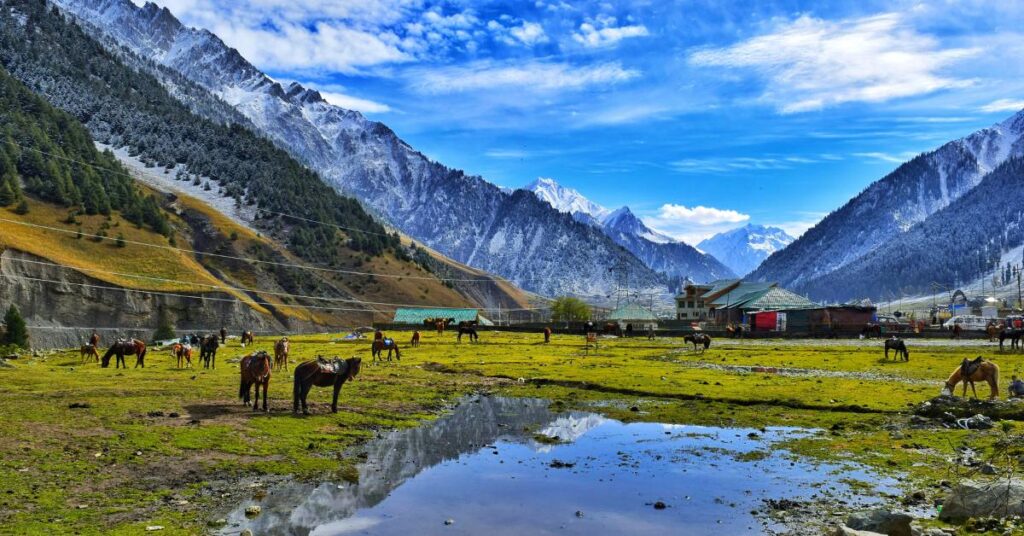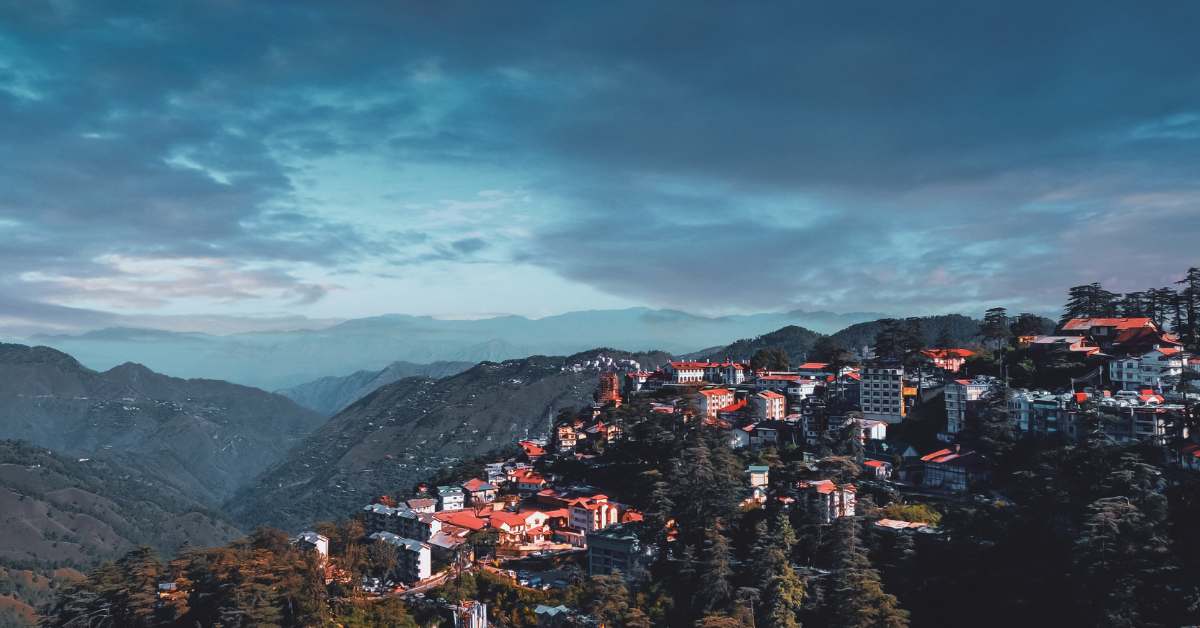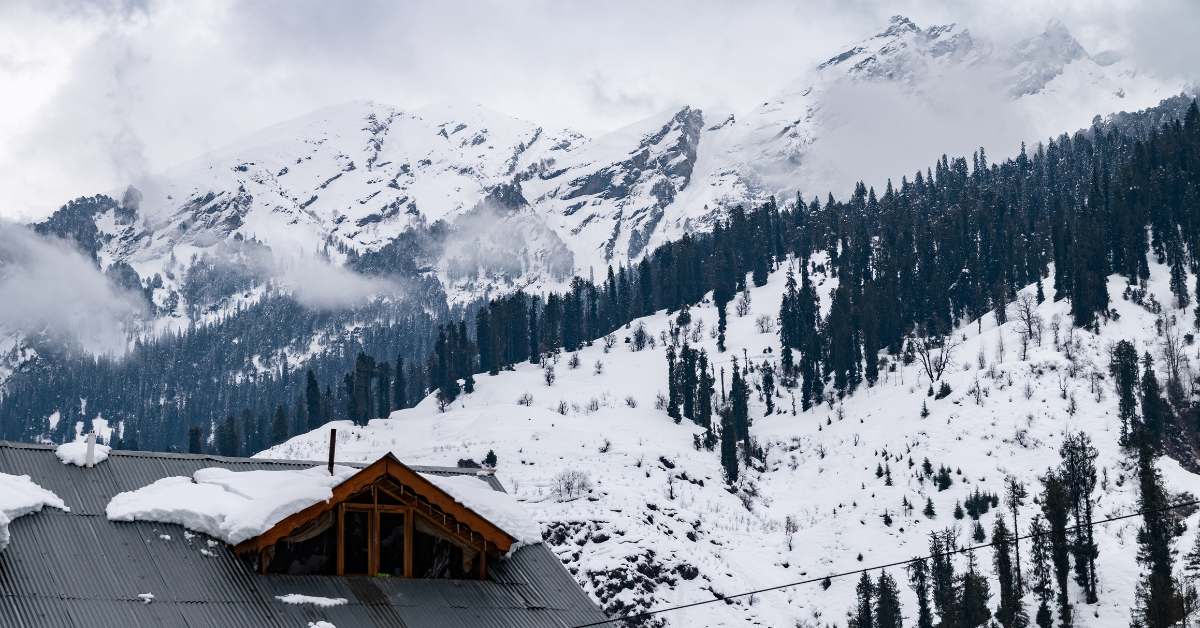What would it be like to find yourself in a valley encircled by snow-covered mountains, green farms, and crystal-clear rivers, all in perfect harmony? This is Suru Valley in Ladakh – an untouched paradise situated in the Kargil district, characterised by magnificent natural scenery and a range of cultural practices. Thanks to its seclusion and stillness, Suru Valley is not a commonly visited location; which in turn is ideal for those wanting to avoid the busy places and see deep parts of Ladakh.
Those who seek excitement, wonder in exotic places, or simply want to be quiet and alone will find much to their delight within the valley of Suru. What are you waiting for? Let’s dive into what makes Suru Valley so unforgettable.
Suru Valley at a Glance
Here’s a quick overview of Suru Valley to help you get oriented:
- Location: Kargil district, Ladakh
- Altitude: Approximately 3,000 – 4,000 meters (10,000 – 13,000 feet)
- Best Time to Visit: June to September
- Key Highlights: Nun Kun Peaks, Suru River, traditional villages, apricot orchards
- The Closest Major Town: is Kargil, around 85 kilometres away
Best Time to Visit Suru Valley
You will see a good transformation of Suru Valley in every season, in all season this place looks amazingly beautiful, but the best time to visit Suru Valley is from June to September. You will see the natural beauty at its fullest during these months.
- June to July: The valley is in full bloom, with wildflowers adding splashes of colour and snow remaining on higher peaks. The weather is mild and perfect for outdoor activities.
- August to September: The weather is still pleasant, and fields are rich with vibrant crops. This is also a quieter time as peak tourist season winds down.
- Winter (October to May): Snow blankets the valley, closing roads and making travel difficult, though the valley remains breathtaking under snow cover.
Suru Valley’s Unique Landscape: A Verdant Oasis in Ladakh
We all know that Ladakh is famous for its deserted beauty, however, Suru is completely different. It is all due to the Suru River. Here in Suru Valley, you will see rich vegetation, and green fields spread out to the large area, something unbelievable to witness at such a high altitude.
The valley stretches over 90 kilometres, with apricot and apple orchards, barley fields, and potato farms set against the stunning backdrop of snow-clad mountains.
Key Natural Highlights
- Apricot Orchards: These orchards bloom in delicate shades of pink and white in spring, filling the air with a sweet fragrance. Apricots are an essential crop here, often dried for use in local recipes.
- Lush Farmland: With fertile fields of barley and potatoes, Suru Valley is an agricultural heartland. Villagers cultivate these crops using traditional farming techniques that have been passed down for generations.
- Wildflowers in Bloom: From vibrant lupines to delicate daisies, wildflowers cover the valley floor during summer, adding to its fairytale-like charm.
The beautiful landscapes of the valley offer good opportunities to nature photographers, and for those who prefer leisure walks. So be ready with your cameras to click some amazing and unmatched vistas at Suru Valley.
Diverse Wildlife in Suru Valley
Suru Valley is a perfect destination for wildlife photographs and lovers as well. The place has a good ecosystem which is why various wildlife species can be observed here. You might need some luck to spot the animals here. Here are some unique wildlife to see in Suru Valley.
- Himalayan Marmots: Often seen sunning themselves on rocks or scurrying through fields, these chubby, playful creatures are a favourite sight for visitors.
- Ibex and Blue Sheep: Agile and elusive, these mountain-dwelling animals can often be seen scaling rocky cliffs.
- Golden Eagles and Himalayan Griffons: These majestic birds of prey soar above the valley, providing a thrilling sight for bird watchers.
- The Elusive Snow Leopard: The snow leopard is rarely spotted, but if you’re lucky, you might catch a glimpse of this legendary creature, especially during the colder months when they descend to lower altitudes.
For bird enthusiasts, the valley is also home to the Himalayan snowcock, Eurasian eagle-owl, and several migratory species. Early morning or late evening are ideal times to witness wildlife in its natural habitat.
Culture and Traditions in Suru Valley
The people of Suru Valley belong primarily to the Purig and Dard communities, each with distinct cultural traditions and customs. Together, they add a layer of human warmth and history to the valley’s natural allure.
Cultural Highlights
- Purig Community (Predominantly Muslim): The Purig community is known for its intricate Islamic architecture, with small mosques dotting the villages. These mosques often feature Persian-inspired designs, adding a unique flavour to the region.
- Dard Community (Tibetan Buddhist): The Dard community practices Tibetan Buddhism, and you’ll find small monasteries adorned with colourful prayer flags and ornate Buddhist art.
In Suru Valley, you’ll witness an intriguing blend of Islamic and Buddhist cultures, each celebrated through festivals, music, and local art. This cultural fusion is visible in everything from traditional attire to the layout of local homes and buildings.
Local Festivals and Celebrations
If you’re lucky enough to visit during a festival, you’ll get a chance to see Ladakhi music, dance, and religious ceremonies that reveal the valley’s deep-rooted customs. Common elements include:
- Traditional Ladakhi Dance: Performed during religious ceremonies and special occasions.
- Local Cuisine: During festivals, villagers prepare traditional dishes made from barley, apricots, and lamb—a great opportunity to taste authentic Ladakhi flavours.
Must-Try Experiences and Adventures
Suru Valley is suitable for both adventure seekers as well as people who would rather engage in quieter pursuits. Here are some must-try experiences:
1. Trekking
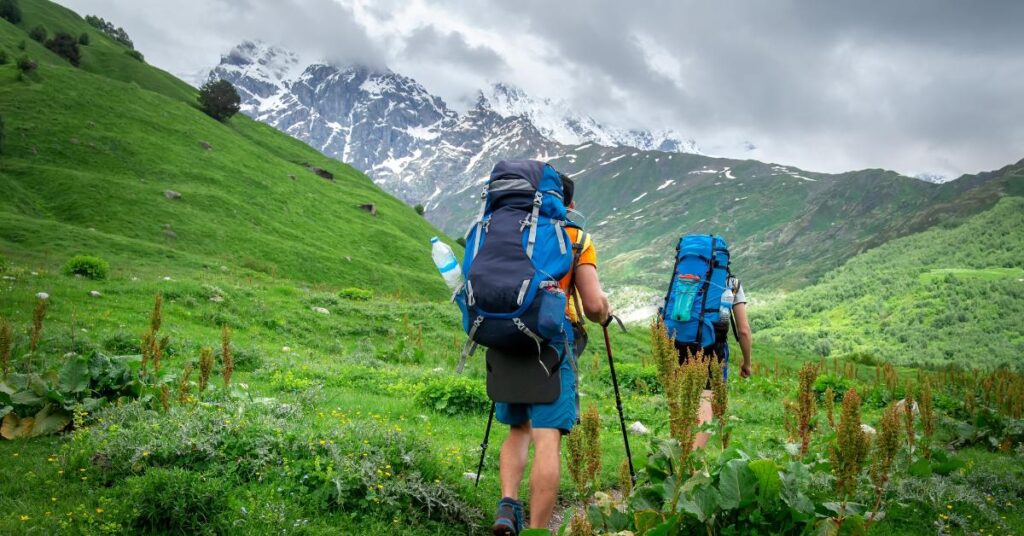
Suru Valley offers a variety of trekking options for all skill levels:
- Nun Kun Base Camp Trek: This challenging trek takes you to the base of the Nun Kun Peaks, offering a rewarding experience for avid trekkers.
- Panikhar to Rangdum Trek: This trek is an easier alternative, leading you through beautiful landscapes and scenic villages. It’s a great way to experience local culture and enjoy panoramic views without the intense challenge of high-altitude trekking.
2. Camping by the Suru River
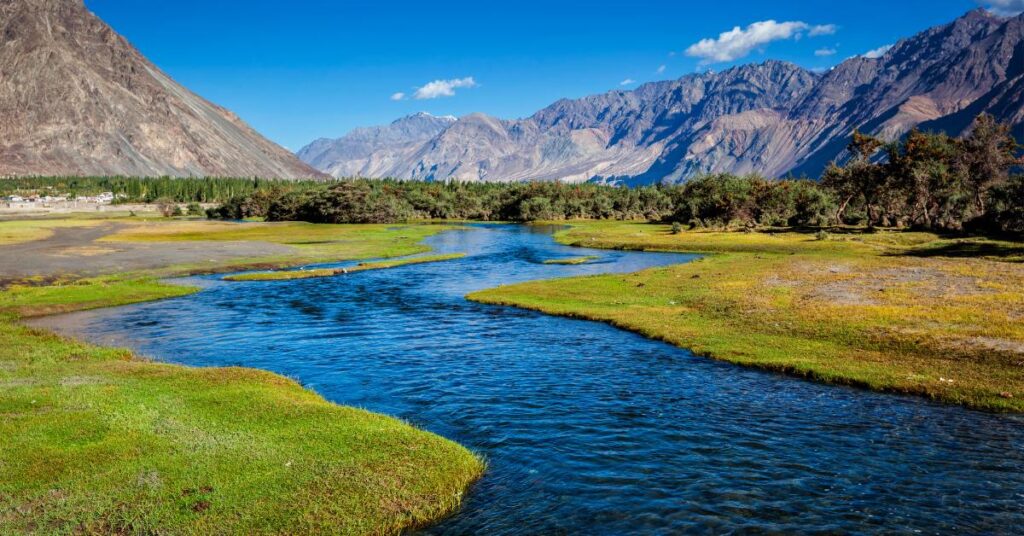
Camping is one of the best ways to immerse yourself in the valley’s natural beauty. Suru Valley has several campsites, mostly along the river, where you can set up your tent and spend the night under a star-studded sky. Suru’s unpolluted air and high altitude make for incredible stargazing opportunities. Waking up to the sight of mist over the river and peaks glowing in the sunrise is unforgettable.
3. Mountain Biking
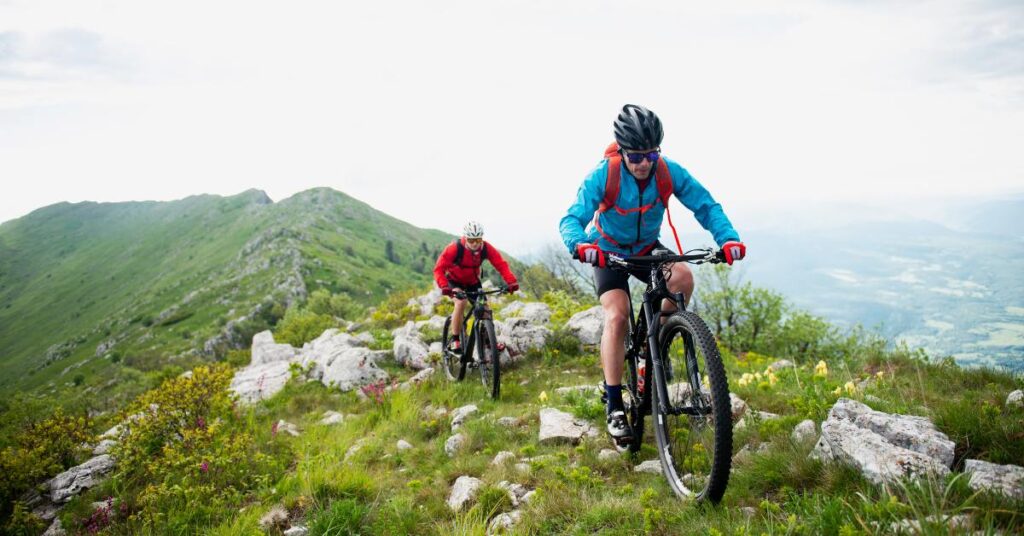
If riding a bike is your hobby, Suru Valley gives biking fans the chance to ride around trails through villages, fields and on the gently sloping hills. The standard bike trails are easy to moderate in standard, and cycling itself makes it possible to travel some distance and enjoy good views at a comfortable speed.
4. Fishing
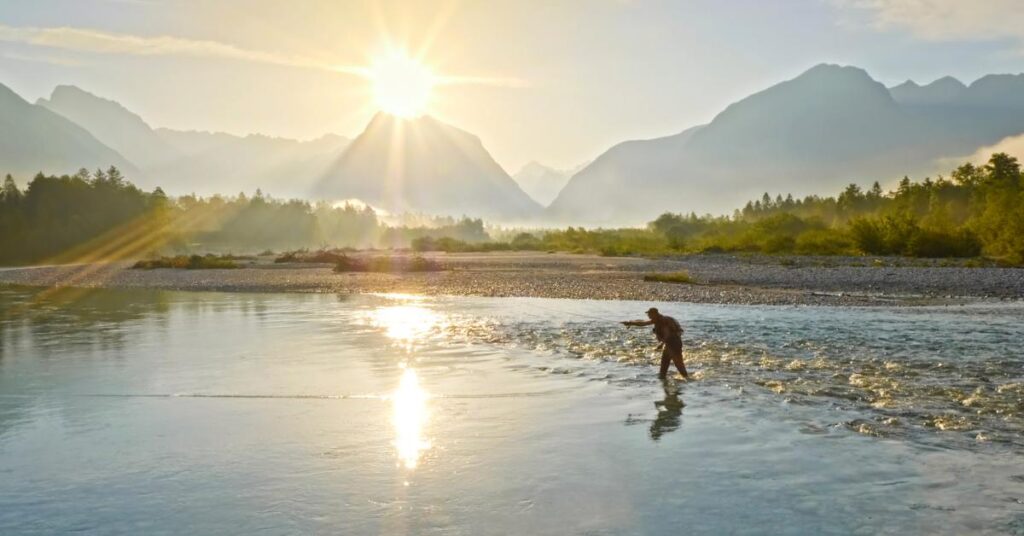
One can spend a quiet afternoon fishing in the Suru River. The river contains trout and some other fish as well. Fishing itself is not a very commercially lucrative venture out here but it surely is a good pastime and allows one to enjoy the beauty of the river. Don’t forget to carry your own fishing gear as there are not many fishing gear for rent.
5. Village Walks and Photography
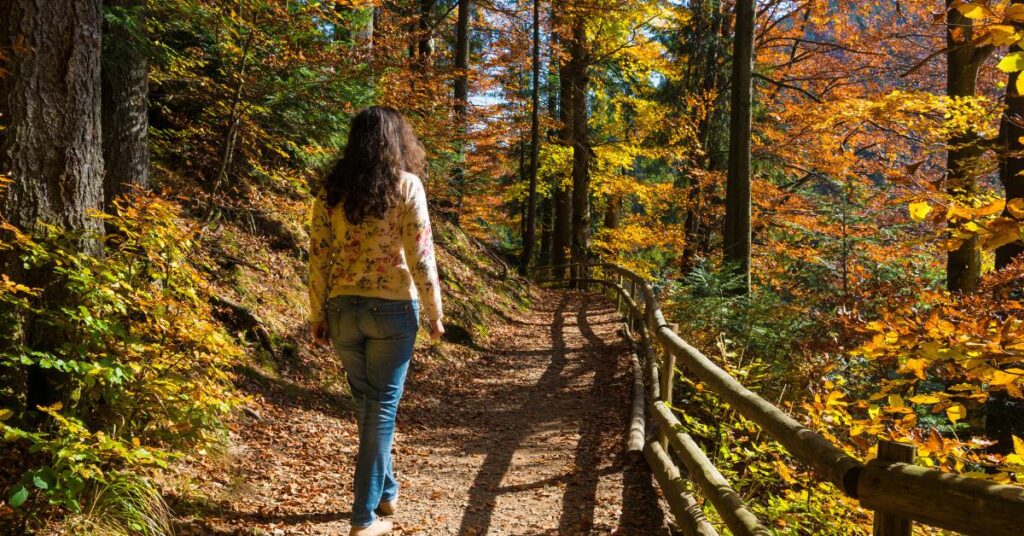
Every village in Suru Valley has its proper sound, sculpted by its given history, local customs and architectural order. For example, Panikhar is a charming village that has typical Ladakhi houses and panoramic views around it that are very impressive. Taking a stroll in these villages adds to the knowledge of the local’s everyday life and the view is immaculate in all angles, from small houses to big rocks.
Getting There: The Road to Suru Valley
Suru Valley is not only a destination but a journey too. So, here is what you should be prepared for:
From Kargil
- Distance: 85 kilometres from Kargil
- Travel Time: Approximately 3 hours by road
Kargil is the closest major town to Suru Valley and serves as the gateway to the region. From Kargil, the route to Suru Valley follows the Suru River, offering mesmerizing views of green fields, mountain peaks, and riverside villages.
Accessibility
- Road Conditions: The road from Kargil to Suru Valley is generally well-maintained, though it can be narrow and winding in certain stretches.
- Seasonal Travel: Roads are typically open from late May to early October. From October to May, heavy snowfall blocks access, so plan your trip accordingly.
Alternative Routes
If you are visiting from Srinagar or Leh, you can reach Kargil first, then continue to Suru Valley. The drive from Srinagar is approximately 234 kilometres, while the route from Leh covers 230 kilometres.
Accommodation Options in Suru Valley
Suru Valley offers several options for accommodation, with choices that reflect the valley’s natural and rustic charm. Options range from budget-friendly guesthouses to cozy homestays.
Where to Stay in Suru Valley
- Guesthouses and Lodges: Larger villages, such as Panikhar, have budget lodges and guesthouses that provide basic amenities and friendly service.
- Homestays: Homestays are popular in Suru Valley, allowing you to stay with local families and experience Ladakhi hospitality firsthand. Homestays typically include home-cooked meals made with locally sourced ingredients, offering an authentic culinary experience.
- Camping: For those looking for an immersive experience, camping by the river or in one of the valley’s fields is a fantastic option. It is advisable to carry your own camping gear if you choose this route.
Practical Tips for Visiting Suru Valley
Visiting Suru Valley can be a little challenging, so here are some tips to help make your trip as smooth as possible:
- Altitude Precautions: Suru Valley’s high altitude means visitors should take time to acclimate. It’s wise to spend a day in Kargil to adjust to the elevation before heading into the valley.
- Packing Essentials: Pack warm clothing, regardless of the season, as temperatures can drop significantly at night. Sunglasses, sunscreen, and a hat are essential for the daytime.
- Local Etiquette: The locals are friendly and welcoming. Always ask permission before taking photos of people, and respect their traditions and customs.
- Carry Cash: ATMs are limited, so carry enough cash for your stay in the valley.
Read more: Complete Guide To Bomdila, Arunachal Pradesh
A Hidden Paradise Worth Exploring
If you are looking for peace, beauty, and adventure, Suru Valley is the only place for you. Suru’s mighty green valleys and apricot orchards, and towering snow peaks are simply breathtaking. The calmness of the valley and the distinctive culture of its people has created an exquisite location that remains unspoiled even in this era of mass tourism.
Whether it is trekking on the rough paths, sitting next to a river on a quiet clear day, or just enjoying the cultural diversity of Suru Valley, the valley has it all. So grab your bags, get ready and head towards the fascinating Suru Valley, Ladakh.
Hello I am Jyoti, I have been a constant travel writer for Trip Trek Tales. I love travelling and therefore, I wanted to contribute in this field. Travelling, writing and reading are the things that I love the most and this is the main reason why I started my career in writing.
At Trip Trek Tales, I am sharing the best information related to the field of travelling. All the information in the articles are after thorough research, personal experiences and knowledge. Hope you love my writings. Thank you. Have a happy travel!

